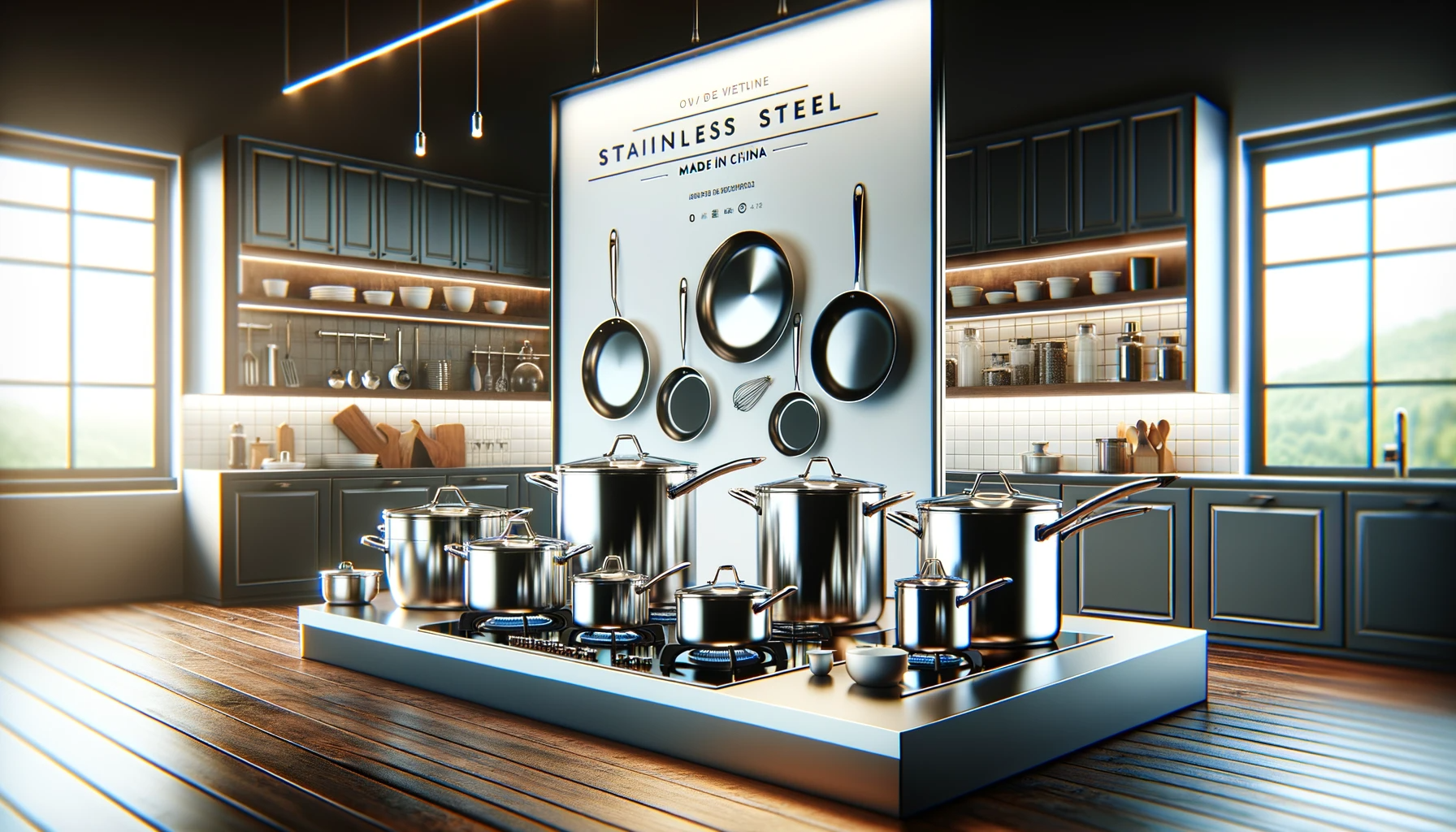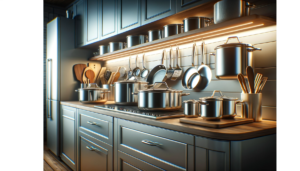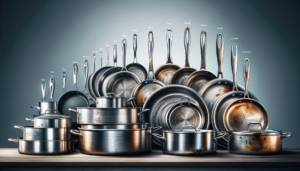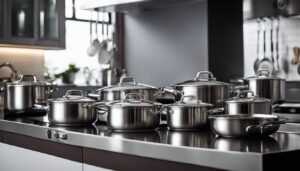Recent concerns over contamination in Chinese exports lead shoppers to question: how safe is even stainless steel cookware made in China?
When held to stringent global safety benchmarks and quality certifications, Chinese-produced stainless steel cookware actually presents very minimal risks while delivering maximum durability.
Let’s examine the production process, safety considerations, and tips for identifying truly food-safe stainless steel cookware made in China
How Safe is Stainless Steel Cookware Made in China?
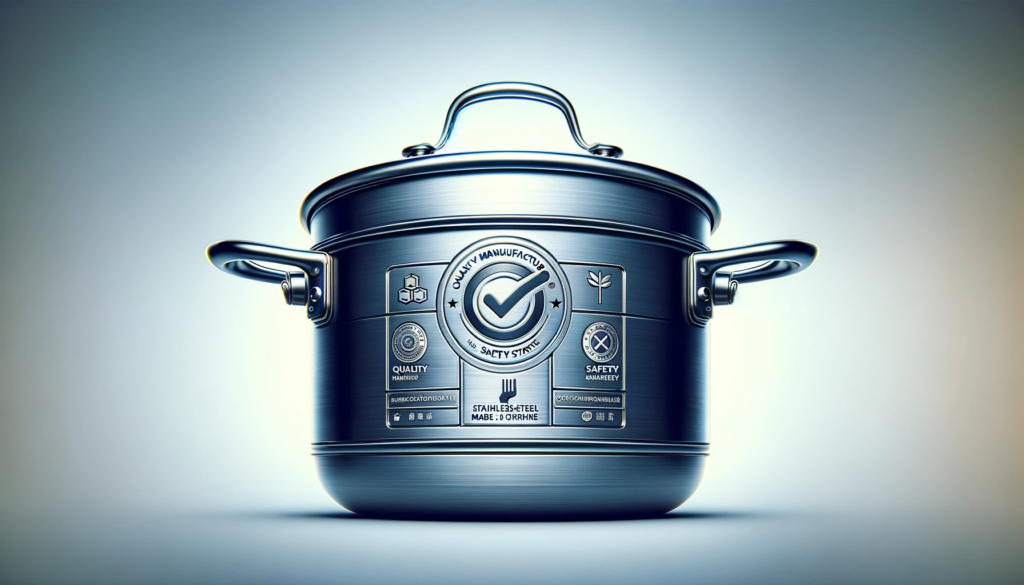
When produced by reputable manufacturers with stringent safety and quality protocols, stainless steel cookware made in China has been deemed broadly safe for cooking by researchers.
Independent testing reveals extremely low risks for leaching of trace metals, while widely adopted certifications regulate food grade materials and responsible production.
As with any cookware type in any country, quality and care do factor in, but studies confirm highly controlled Chinese stainless steel sets meet worldwide safety benchmarks.
Read on below for deeper examination of specific manufacturing processes, safety considerations, and research around this common export.
What is Stainless Steel?
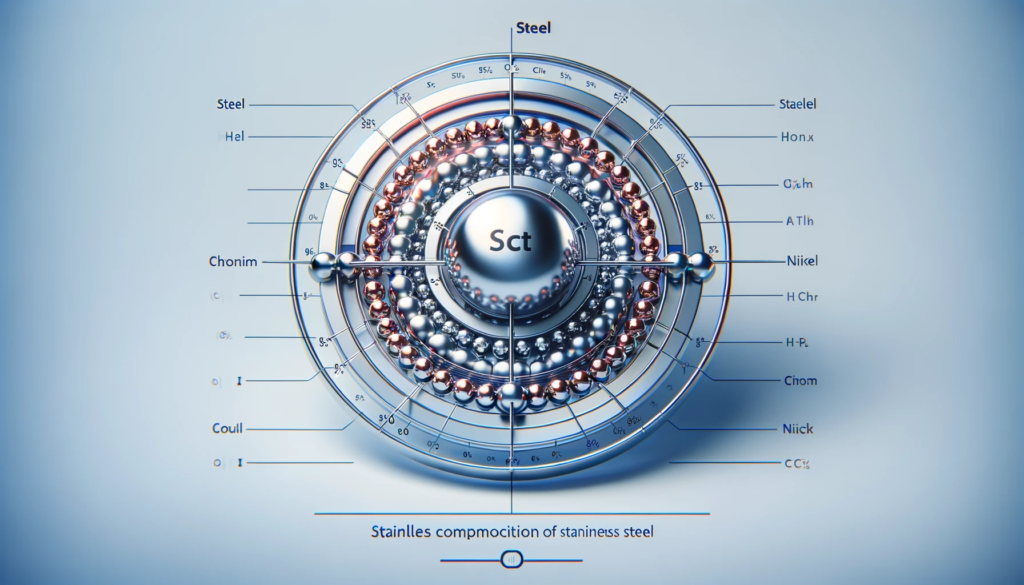
Stainless steel is an alloy, meaning it is made up of a combination of metals.
Specifically, stainless steel contains steel along with chromium and nickel.
The addition of chromium creates a thin, invisible layer of chromium oxide on the surface that makes stainless steel resistant to corrosion.
Nickel enhances the corrosion resistance as well as the durability and ductility of stainless steel.
With its blend of valuable properties including high strength, corrosion and rust resistance, ease of cleaning, and nontoxicity when used with food, stainless steel has become an immensely useful metal alloy for a wide range of applications.
It is especially ubiquitous for kitchenware and appliances.
Stainless steel is used so prevalently for cookware and other kitchen tools because of how ideal and practical it is for food preparation and storage.
It does not rust, corrode, or degrade over time with exposure to food or moisture.
It can withstand high heat, enabling excellent performance for cooking.
The surface does not react with foods or release any toxic chemicals.
This makes it far safer and more hygienic for cooking than metals like copper or reactive materials like aluminum.
Stainless steel is also extremely durable and long-lasting.
High-quality stainless steel cookware often lasts for many years or even decades without issue.
Finally, good stainless steel provides an appealing shine and aesthetic for attractive cookware.
With this unique combination of nontoxicity, durability, longevity, strength, and visual appeal, it is easy to see why stainless steel became ubiquitous as a cookware material over the past century.
Stainless Steel Cookware Production in China
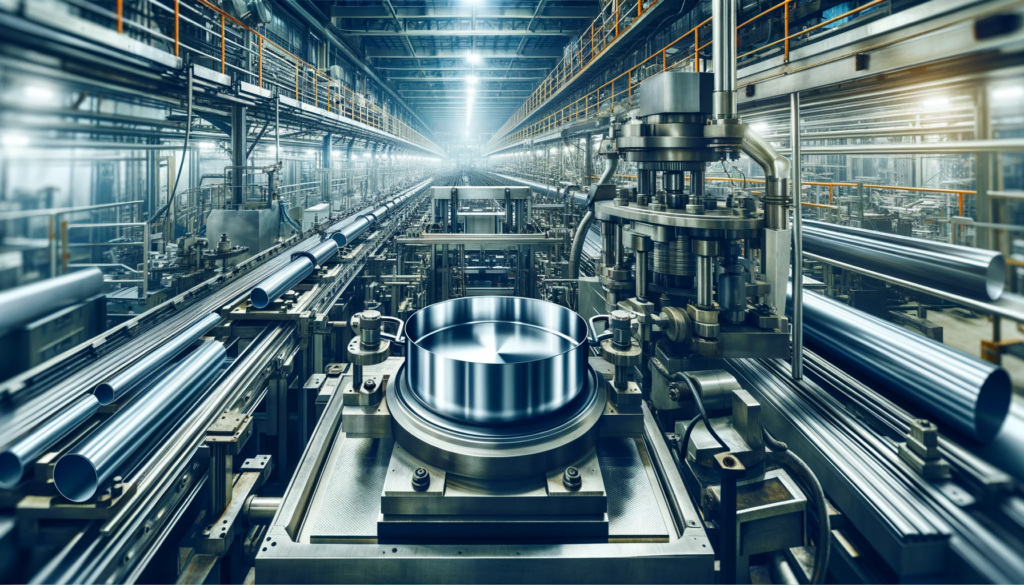
Over the past few decades, China has grown into the dominant global exporter of stainless steel cookware.
Chinese manufacturers are able to produce stainless steel pots, pans, and other kitchen tools at very low costs.
This combination of inexpensive labor, manufacturing infrastructure, and abundant access to stainless steel means Chinese companies can manufacture stainless steel cookware extremely efficiently before exporting all across the world.
Currently, China exports over $7 billion worth of stainless steel cookware annually.
The manufacturing process of stainless steel cookware in Chinese factories starts with procuring food-grade stainless steel metal sheets.
These large specialty mills shape and mold the steel into pots, pans, bowls, and other vessels through processes like deep drawing and metal spinning.
Machines trim and smooth the vessels before they get sent for grinding, polishing, passivation, and other finishing steps.
Many cookware producers have on-site quality control teams that examine factors like surface defects, thickness inconsistencies, contamination, and metal composition.
Reputable manufacturers have their stainless steel cookware tested and certified by organizations like the International Standards Organization (ISO) or the Special Equipment Export Base of China (SEBEC).
Testing ensures their products meet international food safety standards.
After passing examinations and obtaining certifications, finished stainless steel cookware pieces ship out globally to be sold internationally.
Evaluating Safety
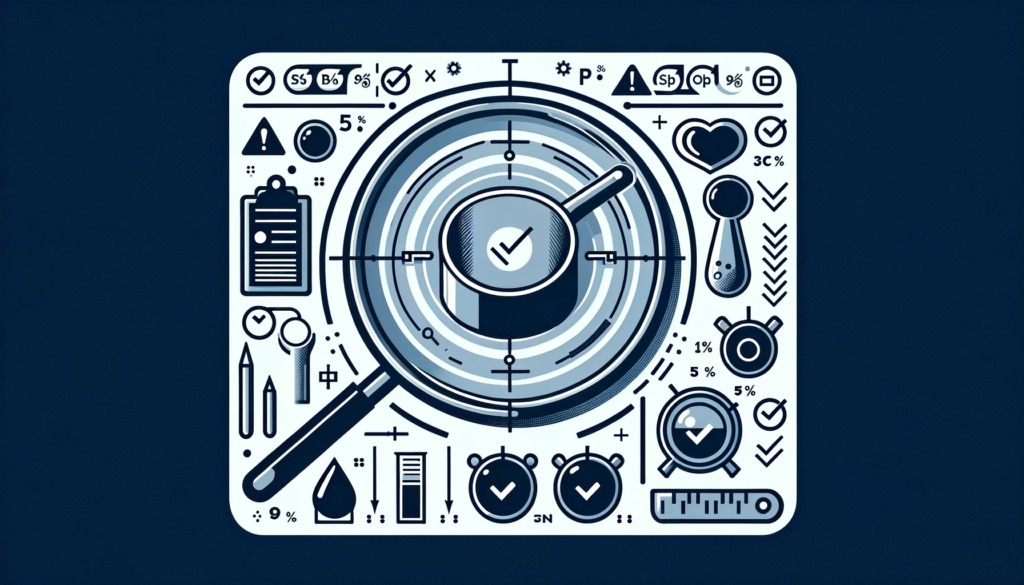
Materials Used
The first step in ensuring stainless steel’s safety is making certain that food-grade stainless steel free of contaminants gets used for cookware manufacturing.
This includes limiting trace amounts of metals like lead or mercury and confirming the right composition of steel, nickel, and chromium.
Stainless steel alloys meant for cookware typically contain 17-19% chromium and 8-10% nickel.
Reputable Chinese manufacturers source all their stainless steel from trustworthy mills with rigorous safety checks and protocols in place.
Any cookware producer failing to properly vet the incoming metal poses contamination risks.
There are also concerns around nickel specifically.
While nickel enhances stainless steel’s desirable properties, it remains a common allergen for a portion of the population.
In very rare cases, nickel can also leach out from cookware into food in negligible amounts.
People with extreme nickel sensitivity may react to ingesting traces of it.
However, for a majority of people, stainless steel cookware contains such minute, well-regulated quantities of nickel that it poses no issues or health risks.
Nevertheless, Chinese manufacturers must adhere to international restrictions and test extensively to monitor potential nickel leaching.
Manufacturing Process
The manufacturing process itself also plays a pivotal role in preventing safety issues with the final cookware products.
Stringent quality control and extensive testing protocols at factories provide essential protection against problems making it through production.
Trustworthy Chinese stainless steel cookware companies thoroughly examine all equipment, inputs, byproducts, and final outputs.
They have systems in place to catch defects plus procedures to dispose safely of industrial metal byproducts.
Rigorous hygiene regulations also protect workers from overexposure to metals or chemical risks in factory environments.
Companies lacking sufficient quality and safety frameworks risk allowing contamination or subpar products get through the cracks.
On top of internal quality control, external audits and certifications offer further validation of safety for consumers.
Compliance with regulations around hazardous materials and restricted chemicals provides more assurance.
Certain elite Chinese manufacturers even adopt standards exceeding minimum legal requirements or seek out additional accreditations.
Without proper oversight though, underhanded producers may cut corners severely compromising cookware safety.
Standards and Certifications
When purchasing stainless steel cookware, identifying trustworthy certifications provides the clearest indicator of safety.
There exist numerous domestic and international quality standards related explicitly to stainless steel cookware production.
The ISO sets worldwide benchmarks for materials, manufacturing processes, testing protocols, health factors, environmental impact, and overall quality management.
Compliance signifies adherence to globally accepted best practices.
Within China, the SEBEC certification applies solely to export-focused specialty equipment companies with extensive auditing ensuring international standards get met.
Certification bodies also restrict the hazardous substances used and regulate the materials’ compositions.
Reputable companies prominently display legitimate accreditations while disreputable ones feign credibility with fake certifications.
Checking for authenticity prevents such deception.
Peer-Reviewed Research
Extensive peer-reviewed research exists examining stainless steel leaching as well as the human health impacts of stainless steel cookware usage.
Scientists focus considerable study on the minute amounts of metals like iron, chromium, or nickel detectable in food after contact with stainless steel.
Research measured higher leaching from lower-quality steels or worn cookware.
Other studies revealed increased leaching in more acidic foods too.
However, quantities remained far below danger thresholds.
Researchers also assessed allergic reactions and skin sensitization but concluded stainless steel very rarely caused issues even for those highly sensitive.
Overall, genuine stainless steel cookware performed extremely safely in scientific evaluations.
Yet compromised materials, flaws allowing corrosion, or damage from abuse may increase risks.
Tips for Safer Cookware
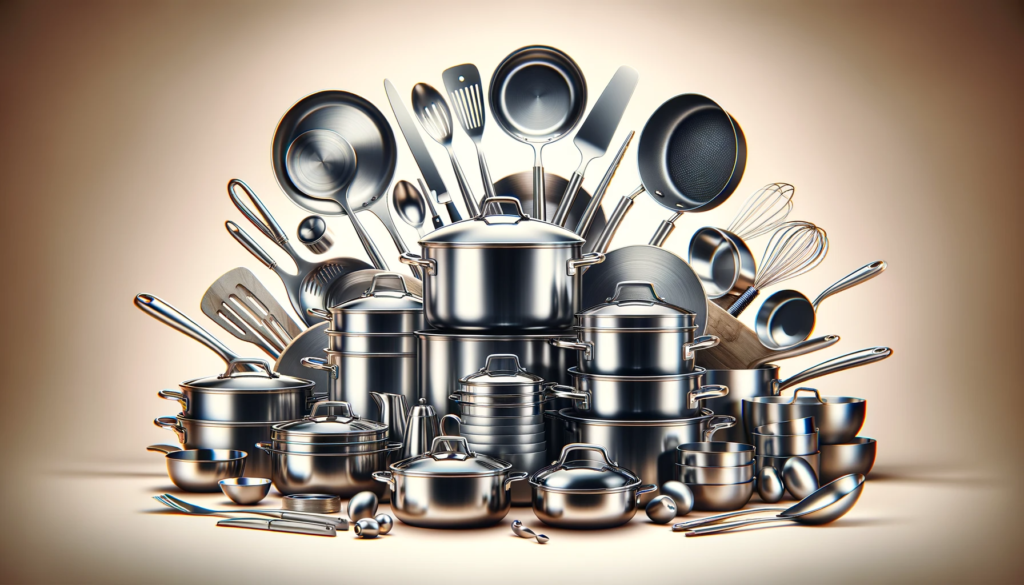
When purchasing Chinese-made stainless steel cookware, check for certifications from reputable organizations like the ISO, SEBEC, or NSF International confirming rigorous safety standards got met.
Authentic international accreditations provide the best indication of responsible manufacturing, high-quality materials, and product safety.
Consumers should also evaluate build quality by examining for surface defects, uneven cooking, or thinning from wear over time which increase potential reactivity and leaching.
Those with extreme nickel sensitivity ought to consult their doctors and closely scrutinize composition details provided.
While unlikely, nickel reactions remain remotely possible otherwise.
In general usage once purchased, consumers must properly maintain their stainless steel cookware too for lifelong safe performance.
Perform prompt cleaning after cooking without scouring abrasively.
Wash gently by hand or dishwasher while avoiding steel wool or potent cleansers wearing down the surface over time.
Any signs of corrosion mean either replacing cookware or restoring the protective chromium layer through passivation.
With appropriate care reinforcing long-term resilience, high-quality stainless steel cookware avoids reactivity concerns.
Reasonable precautions further minimize low risks for those worried about trace nickel exposures.
By selecting conscientious brands and caring for products responsibly, stainless steel cookware provides reliably safe, durable service for cooks wanting utility without health impacts.
Conclusion
In conclusion, when produced by reputable Chinese manufacturers adhering to stringent safety protocols and global quality standards, stainless steel cookware presents minimal risks of metal leaching or contamination according to extensive research.
While no cookware is 100% risk-free, high-quality stainless steel scores well across critical safety benchmarks and remains the go-to nonreactive material for durability and practicality.
By checking for authentic international certifications and avoiding signs of excessive wear over time, consumers can confidently utilize Chinese-made stainless steel for reliable, long-lasting performance in the kitchen.
When held to the highest regulations and cared for properly, Chinese stainless steel cookware delivers safe, quality cooking at affordable prices for consumers worldwide.
